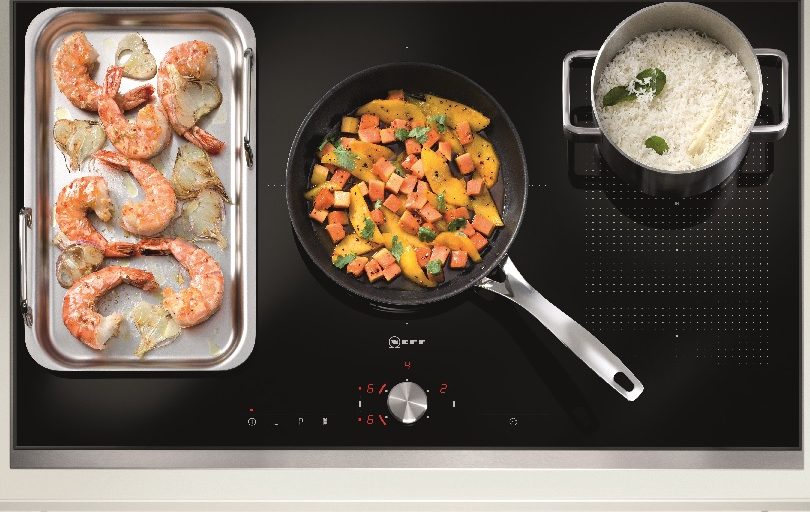
- March 19, 2017
- Advice, Appliances
Beginners Guide to Induction Hobs
Induction hobs have been around for a while now, but we are often asked how they work, and why on earth would anyone move away from trusty gas? Here I thought I’d explain a little why induction is so brilliant, and why it just might be time to say goodbye to gas.
How does it work?
Induction works by using circular coils which generate a magnetic field that induces heat onto a pan made from ferrous material only when it is physically placed onto the hob itself. A good way to check if the pan is made of ferrous material is to see if it’s magnetic, if it is then it will work with an induction hob.
What’s so good about them?
Induction hobs have many features which make them great, but we find one of the biggest selling points is how safe they are. Because induction hobs only heat what they are conducting with (i.e. the pan), it means that only the pan gets hot. Remove the pan, and the hob will cool down very quickly, meaning less chance of little fingers getting burnt. For me the best thing about an induction hob is how easy they are to clean, no more cast iron pan supports to scrub, or little ridges beneath the burners to get food stuck in, just a flat surface to wipe down. Finally, induction is fast. Depending on the make and model you go for, you will probably find it can bring a pan to the boil faster than your gas hob.
How much is it going to cost me?
Induction hobs are more expensive than gas when looking at a standard 4 ring arrangement, whilst you can pick up a gas hob for around £250, an induction hob is going to be closer to £350. Bear in mind though that with features such as flex-induction (where half, or even the whole hob can become the heating area) prices can top £1,000 and beyond. It’s a fantastic feature to have though!
Not converted yet? Give us a call, or pop into our showroom and we can show you a functioning induction hob, or you could pick up a brochure to take away.
